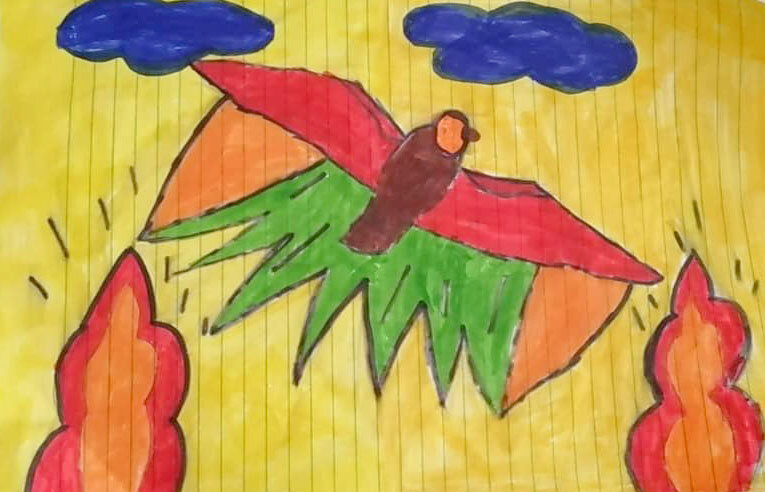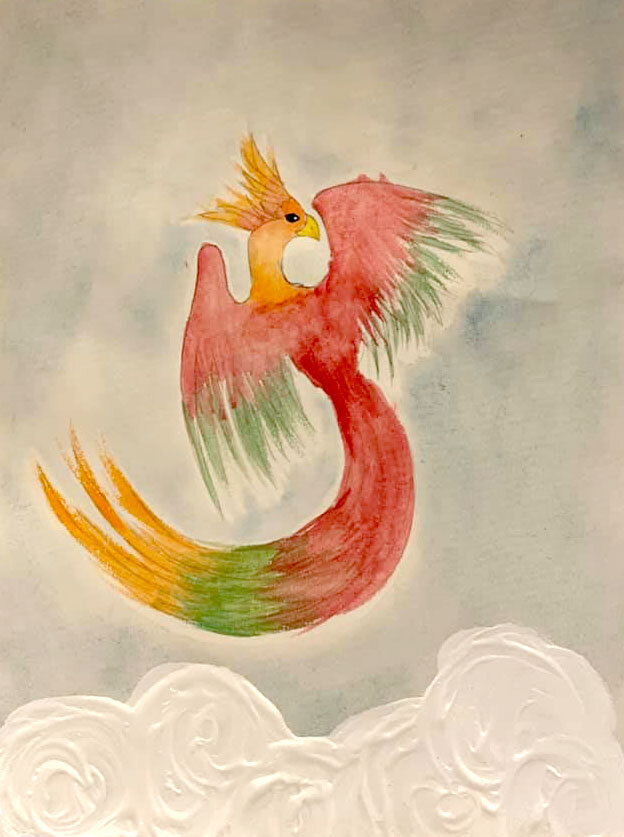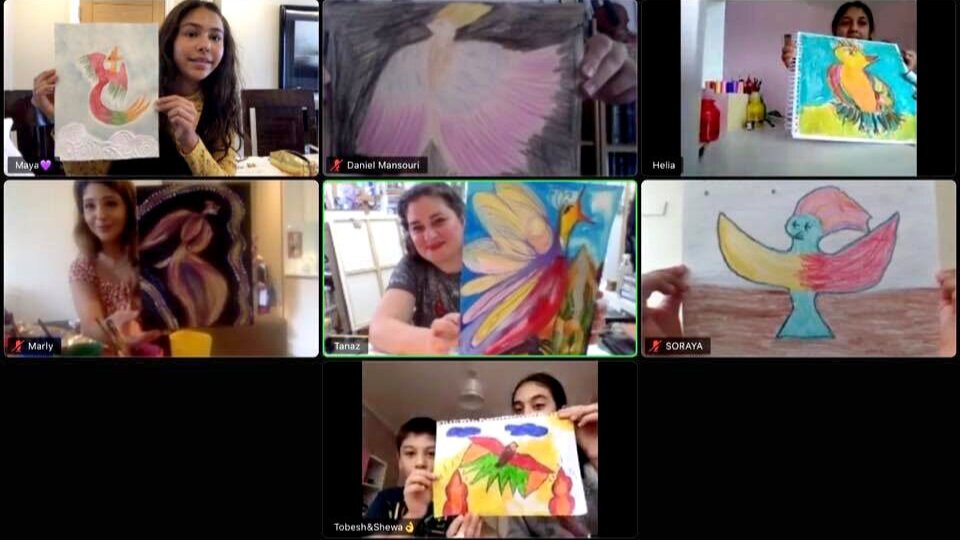Intercultural Youth Development Association Art Workshop
It was such a delight to run this art-webinar for IYDA, our Farsi speaking community, based in South London. The artists who joined me ranged in age from 5 to 30+ and the results were truly impressive.
The theme was Simurgh (also spelt Simorgh) the majestic mythical bird of Shahnameh (The book of Kings). The Simurgh is depicted in Iranian art as a winged creature in the shape of a bird, gigantic enough to carry off an elephant or a whale. The Simurgh learned so much by living so long that it is thought to possess the knowledge of all the ages. In one legend, the Simurgh was said to live 1,700 years before plunging itself into flames (much like the phoenix). The Simurgh was considered to purify the land and waters and hence bestow fertility. The creature represented the union between the Earth and the sky, serving as mediator and messenger between the two.
There was a choice of two stories the artists could select to illustrate, one of them was the famous legendary story from the Shahnameh (The book of Kings) by Ferdowsi, and the other from Mantegh-o-Tayre (The Conference of Birds) by Farid-ud-din Attar Neishabouri.
Shahnameh
According to the Shahnameh, Zal, the son of Saam, was born albino. When Saam saw his albino son, he assumed that the child was the spawn of devils, and abandoned the infant on the mountain Alborz.
The child's cries were heard by the tender-hearted Simorgh, who lived atop this peak, and she retrieved the child and raised him as her own. Zal was taught much wisdom from the loving Simurgh, who has all knowledge, but the time came when he grew into a man and yearned to rejoin the world of men. Though the Simurgh was terribly saddened, she gave him three golden feathers which he was to burn if he ever needed her assistance.
Mantegh-o-Tayre
Iranian Sufi poet Farid ud-Din Attar wrote of a band of pilgrim birds in search of the Simurgh. In the poem, the birds of the world gather to decide who is to be their king, as they have none. The hoopoe, the wisest of them all, suggests that they should find the legendary Simurgh, a mythical Persian bird roughly equivalent to the western phoenix. The hoopoe leads the birds, each of whom represents a human fault which prevents man from attaining enlightenment. When the group of thirty birds finally reach the dwelling place of the Simurgh, all they find is a lake in which they see their own reflection. This scene employs a pun on the Persian expression for "thirty birds" (si-morgh).
Each painting created shows a beautiful interpretation of this bird that resides in our psyche. We know in times of doubt or trouble we can call upon this mighty imagination of power and re-birth. If you can imagine it you can be it!








